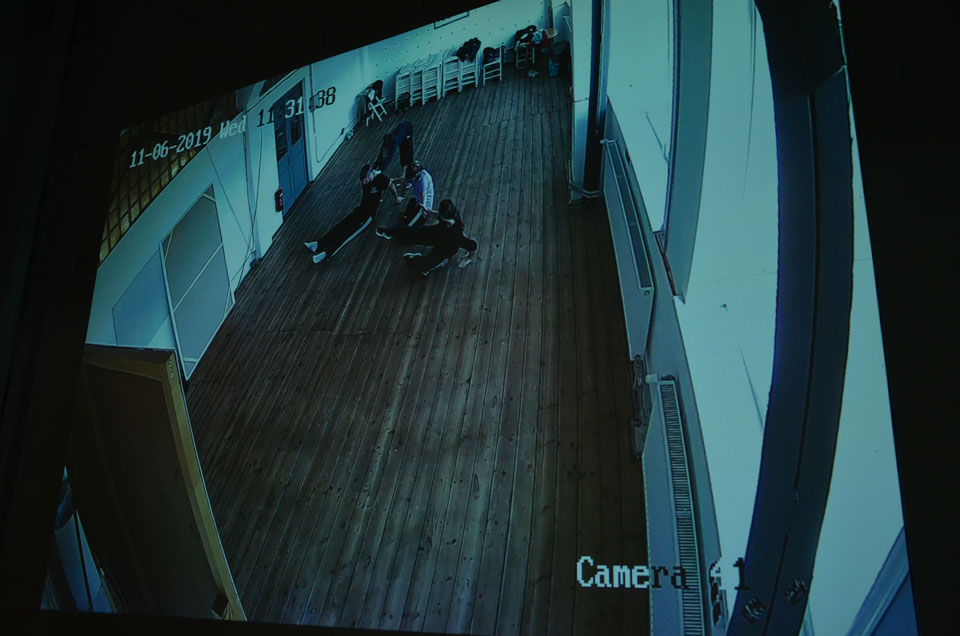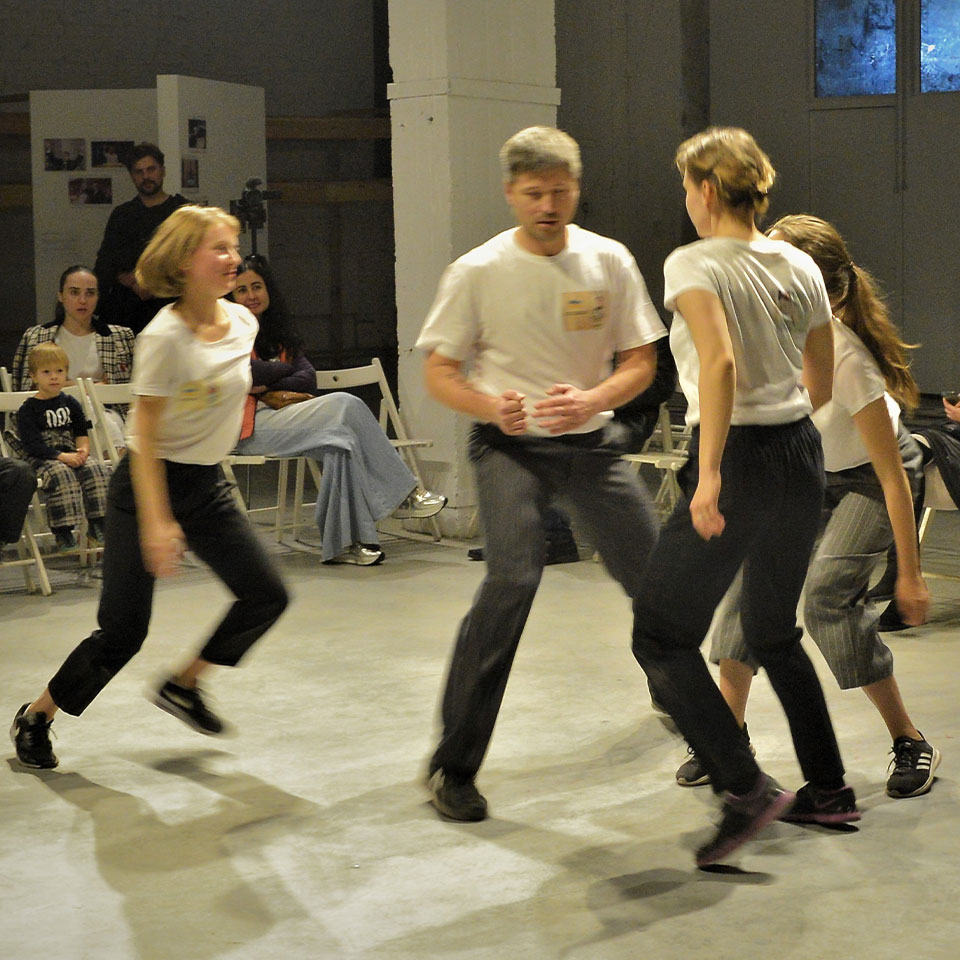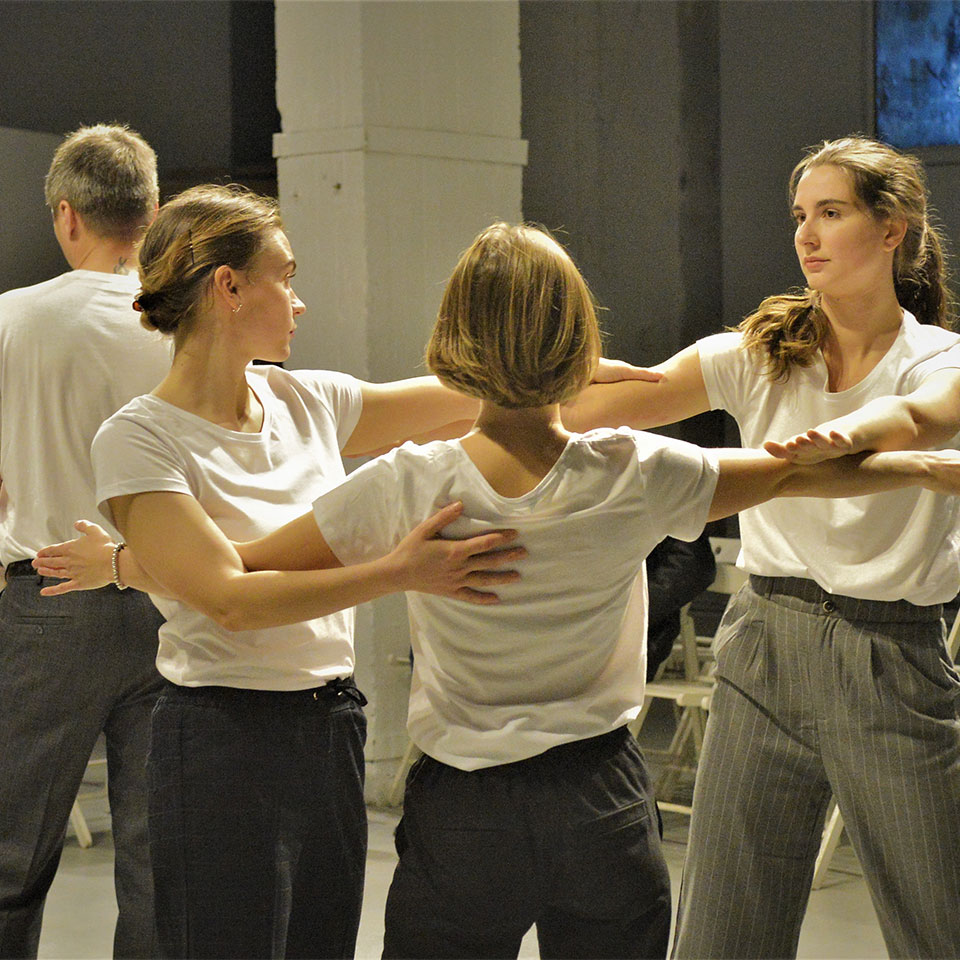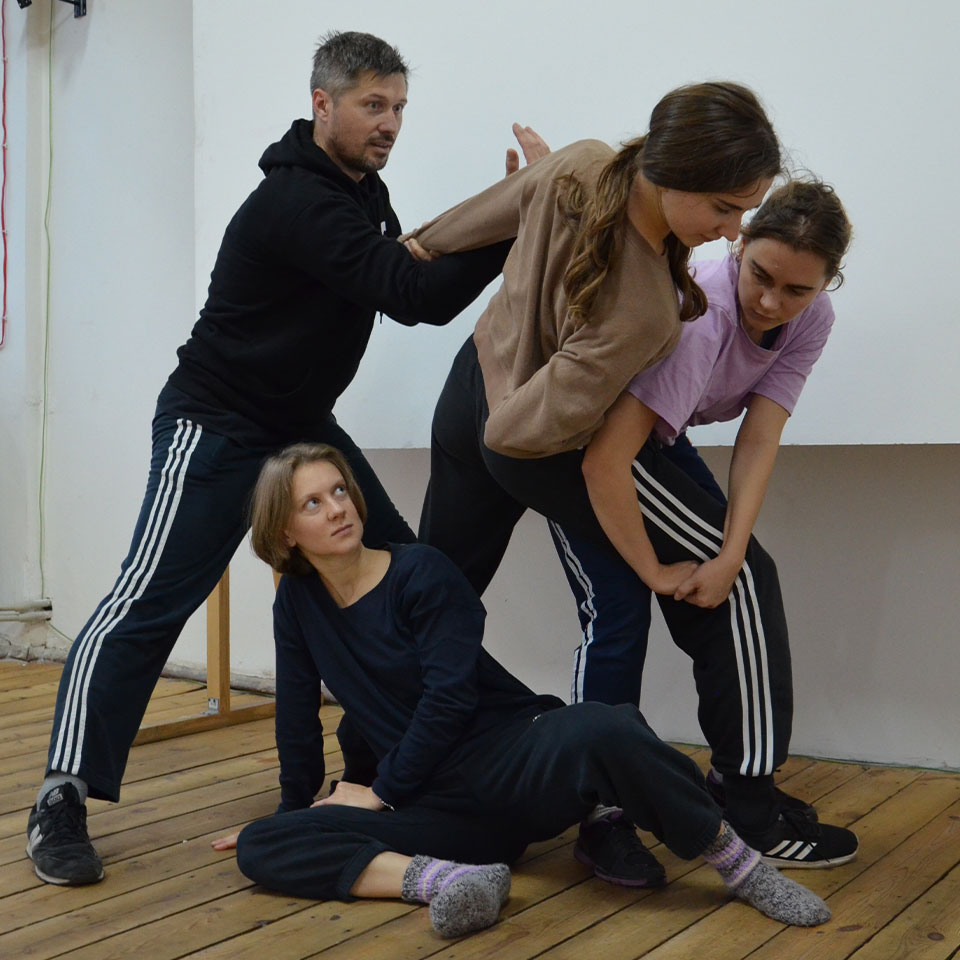2019
Residency at IZONE, IZOLYATSIA
Kyiv, Ukraine

Made possible by the Tanzrecherche NRW scholarship and artistic center IZOLYATSIA, this residency explores symbolic violence in the context of the events of Euromaidan and Russian military aggression in Ukraine since 2014. How does symbolic violence manifest itself during a military crisis? What does it do to the cityscapes it occurs in? How is the local population affected on a structural and personal level? How can we recognize and resist the workings of symbolic violence? Can art facilitate this process? Addressing these questions, Yana Novotorova collaborated with Sophia Seiss, Anna Lutsenko and Anton Ovchinnikov to investigate different ways of connecting theoretical discourse on symbolic violence with movement and performance practices.
A public showing took place at IZOLYATSIA on November 13th, 2019.
„What characterizes power is the way that its internal complexity goes hand in hand with a multiform intervention on the plane of space.(…)Thinking about and organizing space is one of the pre-occupations of power. If every strategy of power has a spatial dimension, power also has a practice of spatial domination that is appropriate to its strategy.“
Jean-Michel Brabant



How did you arrive at the idea of investigating symbolic violence in Ukraine and what was the focus of the research?
YN: I grew up in Kyiv, so, naturally, I have been very concerned about the situation in Ukraine since Euromaidan and the tragic events of 2014. Already during the first residency at Tanzfaktur I had a wish to go to Kyiv and investigate symbolic violence in the context of the war and the annexation of Crimea.
The focus this time was on the interrelation between physical and symbolic violence, as well as on the workings of symbolic power on a spatial, architectonic level. Physical violence always has its symbolic component, and vice versa, symbolic power can lead to physical violence. To give an example, in January of 2014 Viktor Yanukovych – still being the acting president at that time – enforced a law that criminalized activities of the protesters and allowed police to take radical measures against them. Six days later, two people were shot dead. Unfortunately, they were not the only ones…
How did you go about the research process? Did you manage to bring theory and practice together?
YN: Since it was the first time that the four of us worked on the topic, we took time to establish a common ground for the work. We read about and discussed the phenomena of symbolic power and violence, focusing on several books dealing more specifically with the situation in Ukraine: „The Road to Unfreedom: Russia, Ukraine, America“ by Timothy Snyder, „Frontline Ukraine“ by Richard Sawka and „This is Not Propaganda“ by Peter Pomerantsev.
We also went through the documentation material of some of IZOLYATSIA’s past projects and discovered something exciting: In the Architecture Ukraine project that took place in the summer of 2015, Brigitte Piquard, a researcher and professor at Oxford Brooks University, gave a lecture titled „Observing Symbolic Violence: Symbolic Violence, Resilience and Space in Conflict-Affected Areas“ in which she talked about symbolic violence in conflict-affected areas.
She mentions several forms that symbolic violence can take in this context: obstruction of freedom of movement, destruction of heritage/or lifestyle, as well as an imposition of a different lifestyle, destruction of the environment and forced displacement, among others. This has given us valuable input for practical research. For example, we have worked physically with the idea of restricting movement through various scores and games. This has resulted in a score we called „barricading practices,“ which explores obstruction of movement on different levels. That’s where we got to a very exciting point, and that is, we tried to clarify for ourselves what we perceive as violent when we dance and improvise – symbolically, but also physically, and whether you can avoid it…and whether you even should? If I physically block someone’s way, it’s already a thoroughly violent act, and you also feel it emotionally and physically while it’s happening, even if you know it’s actually just a game. Is it still violence then? If so, what kind? Can it also transform into something else?
How did your being in Kyiv contribute to the research?
YN: It did influence our research a lot! During the three weeks of the residency we visited Maidan square and other places to see how the city had changed, what traces of the events of 2014 were still visible. Even though the city was rebuilt after the destruction, there is a huge memorial complex that preserves the memory of those tragic events. What we found particularly interesting is that parts of the barricades had been kept in the cityscape and repurposed, so to speak, into memorials.
We found the idea of power as something that can organize and dominate space on multiple levels very intriguing and have taken it as an impulse for our performative practice. We experimented with an idea of the body organizing and defining space through movement, as well as the potential of the gaze to create spaces and exercise power.
In doing so, we have worked with the notion of a so-called „invisible frame.“ What I mean is, for example, the perception of a triangle without one – as in the famous „Kanizsa triangle“ from Gestalt theory. This perception can also occur when three people, representing the vertices of the figure, are just standing in space. The boundaries between them do not exist, but you perceive them anyway. Three of us who formed the frame framed the fourth person, defining the space in which he or she could move. The interesting thing was to play with the intentions of both roles: It makes a big difference if the person who is inside adapts and follows the given frame, or if the person who is enclosed tries to escape the frame, and the frame has to follow and adapt to keep the person inside. This is a metaphor for us of the „invisible“ effects of the symbolic power and violence that surround us and how to deal with it.
Funded by NRW Kultursekretariat Wuppertal in the frame of Tanzrecherche NRW Scholarship.
Supported by cultural initiative IZOLYATSIA and IZONE.

